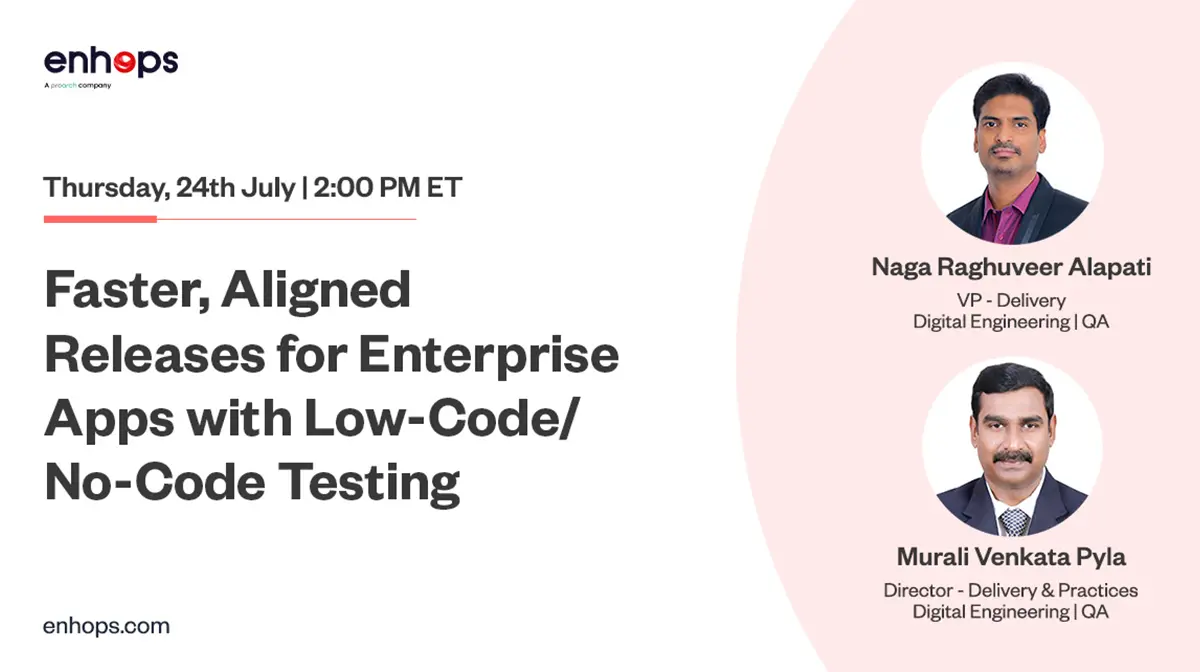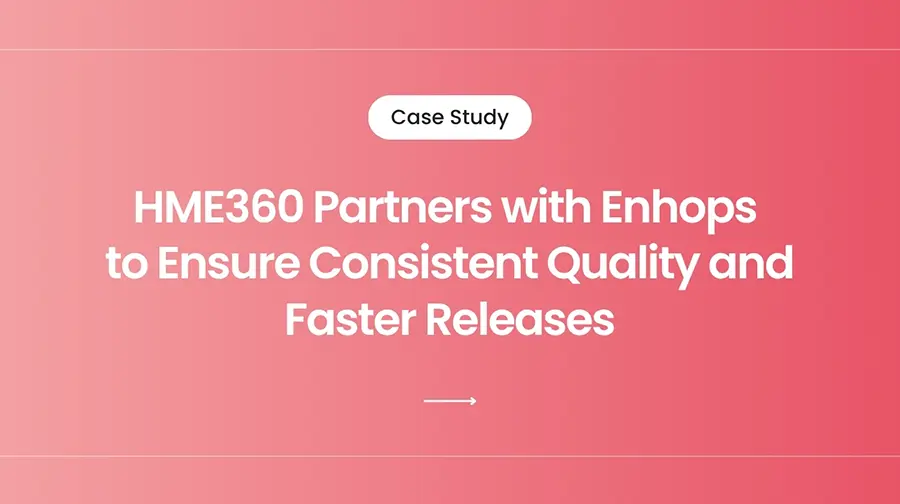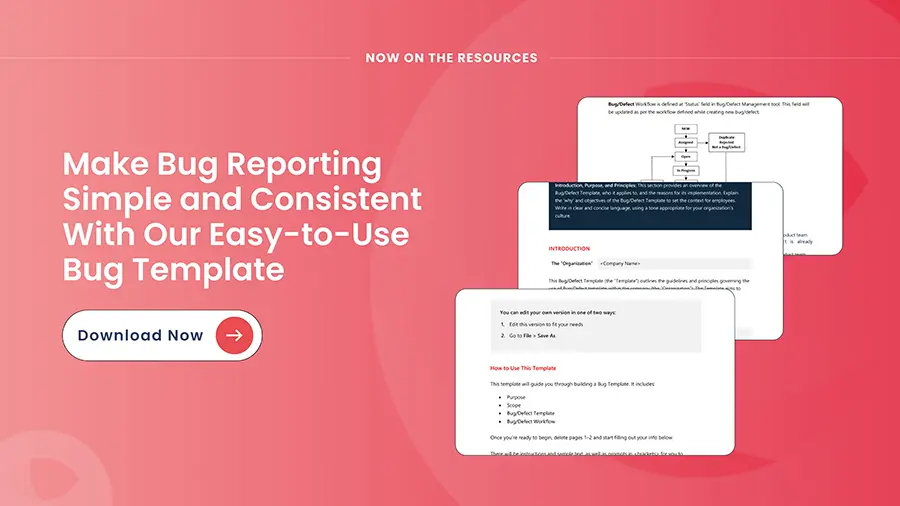Test automation framework can make or break the entire testing strategy. About 9 in 10 clients turn to us for help in picking the right tools and frameworks—so they don’t pay for the wrong choices later.
The framework selection determines release speed, test maintenance, test flakiness, and testing time. This blog will help you understand different tools, frameworks, and how to pick the right combination for your applications and testing projects.
Tool vs. Framework: What’s the Difference
- Automation Tool → This is the software or library that performs automation by interacting with browsers, apps, or APIs. Examples: Selenium, Cypress, Playwright, Ranorex.
- Automation Framework → The structured approach built around the tool. It defines how tests are designed, managed, and scaled—covering aspects like test data, reporting, reusability, and maintainability.
Think of the tool as the engine and the framework as the vehicle. The engine provides power, but the vehicle determines how efficiently and sustainably you can move.
Breaking Down the Major Test Automation Tools
In this guide, we break down four widely used test automation tools—Selenium, Cypress, Playwright, and Ranorex—showing how each fits into different frameworks, scenarios, and testing needs.
Selenium – The Cross-Browser Testing Tool
An open-source web automation tool that supports multiple languages and all major browsers. It’s flexible but requires you to set up your framework around it.
Frameworks You Can Build with Selenium
- Data-Driven Framework – Test data stored in Excel, CSV, JSON, or DB; good for running same tests with multiple data sets. (Selenium + Apache POI). Used for apps with heavy input variations. (form testing with multiple datasets).
- Keyword-Driven Framework – Actions are defined as keywords (login, search, checkout) stored in external files, read at runtime. Ideal for long-term and legacy projects with high maintenance. Good scope for flexibility, reusability, scalability.
- Modular Framework – Breaks the application into independent modules for better reusability. Ideal for apps that consist of several standalone modules, where each module needs to be tested individually.
- Hybrid Framework – A mix of Data-Driven + Modular + POM (Page Object Model). POM is a way to organize your automation code so that page details (locators, buttons, fields) are stored separately from the test logic, making tests easier to maintain. This setup works well for large and complex applications that need frequent updates, high maintainability, and scalable end-to-end test coverage.
- BDD Framework – Uses Gherkin syntax for readable scenarios (Selenium + Cucumber). BDD turns test cases into easy-to-read stories that the whole team can understand. It works best when product owners and business analysts are directly involved in reading, writing or reviewing test cases.
Cypress – The Leading Front-End Testing Tool
Cypress is a modern JavaScript-based end-to-end testing framework designed for web applications. It runs directly in the browser, providing fast feedback during test execution. With minimal setup required, Cypress comes with powerful built-in features like automatic waiting, real-time reloading, and easy debugging, making it a developer-friendly choice for modern testing needs.
Frameworks You Can Build with Cypress
1. Mocha (Default) – Cypress comes with Mocha as the default test framework for structuring tests. It works well when you just need a straightforward BDD/TDD-style structure to organize and execute test cases in Cypress.
2. BDD Framework (Cypress + Cucumber Preprocessor) – Uses the Cypress Cucumber Preprocessor to write tests in Gherkin syntax. This setup helps QA, developers, and business teams use the same Given–When–Then language, making test cases easier to read and validate together.
3. Component Testing Frameworks
- React Testing Library – Tests React components in isolation. Useful when you want to validate component-level test cases before integrating into the full React application.
- Vue Test Utils – Tests Vue.js components in isolation. Designed for Vue-based SPAs where component test cases need to be verified before integration.
4. Reporting Frameworks
- Mochawesome – Provides HTML reports for Cypress test execution. Best choice when you need readable, shareable reports that show test case execution details.
- Allure Reporter – Generates detailed reports with screenshots and logs. Handy when you want lightweight API validation inside the same Cypress test cases without external tools.
5. API Testing Frameworks
- Cypress API Testing – Built-in support for API testing using cy.request(). Select this framework when you want lightweight, built-in API validation within Cypress.
- SuperTest – Extends Cypress with advanced API testing features (chaining requests, assertions). Useful when test cases involve complex API flows like chaining requests or advanced assertions.
6. Data-Driven Testing
- Faker.js – Generates random test data for Cypress tests. Helps Simulate realistic user inputs (names, emails, addresses) without hardcoding.
- Fixtures (Cypress Built-in) – Uses JSON files for structured test data. Works well when test cases need to run with multiple static data combinations or structured datasets.
Playwright – The All-in-One Testing Tool
Playwright comes from Microsoft and it supports web automation, API testing, and mobile emulation. Works across Chrome, Firefox, Edge, and WebKit. Supports multiple languages and has powerful built-in capabilities.
Frameworks You Can Build with Playwright
1. Test Frameworks (Built-in & External)
- Playwright Test (Default) – Built-in test runner in Playwright, designed for fast, parallel execution. It’s the go-to when you want retries, fixtures, and debugging tools already included to manage large suites of test cases efficiently.
- Jest – Used for UI testing with Playwright, especially in JavaScript/TypeScript projects. A good fit when you already have an existing Jest setup for UI tests to maintain consistency.
- Mocha & Chai – Playwright can be paired with Mocha as a test framework and Chai for assertions. Useful when teams prefer flexibility with a customizable test runner and strong assertion library.
- js (BDD with Playwright) – Enables writing tests using the Gherkin syntax (Given–When–Then). Works best when QA, developers, and business teams collaborate closely and need Behavior-Driven Development (BDD) scenarios that are easy for everyone to read.
2. Reporting Frameworks
- Allure Report – Generates detailed HTML test reports with logs and screenshots. Ideal when test case reporting must be audit-friendly with step-level insights, logs, and screenshots.
- Mochawesome – Works with Mocha to provide HTML reports. Practical when you’re running Playwright test cases with Mocha and need clear, shareable execution results.
- Playwright HTML Report (Built-in) – The built-in Playwright Test reporter produces interactive reports out-of-the-box. Good choice when you want instant visibility into test case execution without extra setup.
3. API Testing Frameworks
- Playwright API Testing (Built-in) – Supports API testing using request objects directly. Useful for validating REST endpoints within the same Playwright test flow.
- SuperTest – Used alongside Playwright for REST API testing. A better option when test cases need to chain multiple requests or handle complex validations.
4. Component Testing Frameworks
- Playwright Component Testing (Experimental) – Tests React, Vue, and Angular components in isolation. Handy for running early validation of UI components before full integration.
- React Testing Library – Used for unit testing React components with Playwright. Best when you want to validate React component behavior independently.
- Vue Test Utils Used for Vue component testing with Playwright. Useful when you need to run isolated test cases for Vue components before rolling them into a larger app.
5. Visual Regression Testing Frameworks
- Applitools Eyes – Integrates with Playwright for visual testing. Helps to ensure that UI changes are intentional, preventing layout or styling issues.
- io – Provides screenshot-based visual regression testing. Good for capturing and comparing screenshots across test runs for UI validation.
6. Data-Driven Testing
- Fixtures (Playwright Built-in) – Provides test data dynamically. Useful when you need consistent inputs or multiple variations of the same test.
- Faker.js – Generates fake/random data for automated tests. Great for simulating realistic user inputs like names, emails, and addresses.
Ranorex – The Low-Code Desktop & Mobile Expert
A commercial tool for desktop, web, and mobile testing. Best for teams with little to no coding experience. Has built-in framework structures.
Frameworks You Can Build with Ranorex
1. Linear Framework – Record & playback, executes tests as recorded (good for quick POCs). Best for quick automation of small projects, proof-of-concepts (POCs), or demo scenarios where speed matters more than maintainability. Useful for business users or beginners who want to create tests without coding knowledge.
2. Modular Framework – Breaks tests into modules that can be reused. Ideal for larger desktop applications where UI components are reused across multiple screens. Reduces redundancy, improves maintainability, and makes updating tests easier when UI changes.
3. Data-Driven Framework – Integrates with Excel, CSV, or DB for test data. Best for form validations and workflows where the same steps must be tested with multiple input sets (login with multiple users, form submissions, payment details). Improves test coverage by validating different data combinations.
4. Hybrid Framework – Combines modular structure + data-driven + some coded actions. Perfect for enterprise-level applications where testing spans across desktop, mobile, and web platforms. Allows reusability, flexibility, and scalability—suitable for complex end-to-end testing scenarios with high maintainability.
Comparison of Test Automation Tools Pros and Cons
| Tool | Pros | Cons |
| Selenium |
|
|
| Cypress |
|
|
| Playwright |
|
|
| Ranorex |
|
|
Not sure which test automation tool fits your needs?
Download our Test Automation Tools Comparison Chart for feature comparison.
Make the Right Choice
The right automation setup is less about following trends and more about aligning with your application, team, and testing goals. A framework that looks good on paper can fail in practice if it doesn’t match your context. That’s why the decision should follow a simple flow:
- Start with your application type → Is it web, desktop, or mobile?
- Match the tool → Choose the tool for compatibility that runs best for your environment.
- Select the framework → Decide if you need Data-Driven, BDD, Hybrid, or Modular to support long-term maintainability.
- Bring in experts if you aren’t sure → Outsource A quick expert review early to avoid costly mistakes down the line.
By mapping the right tool–framework combination to these factors, you move beyond a handful of scripts and build automation that scales with your release cycles.
Conclusion
Automation isn’t just about writing scripts — it’s about building a sustainable ecosystem that supports fast, high-quality releases. By selecting the right tool and the right framework, aligned to your application type, team skills and release cadence, you set yourself up for success.
If you’re facing doubt about tool-fit, framework architecture or long-term maintainability, we’re here to help. At Enhops we specialise in building customised test automation solutions — tailored frameworks, AI-driven testing, and strategies that maximise coverage, speed and reliability.




